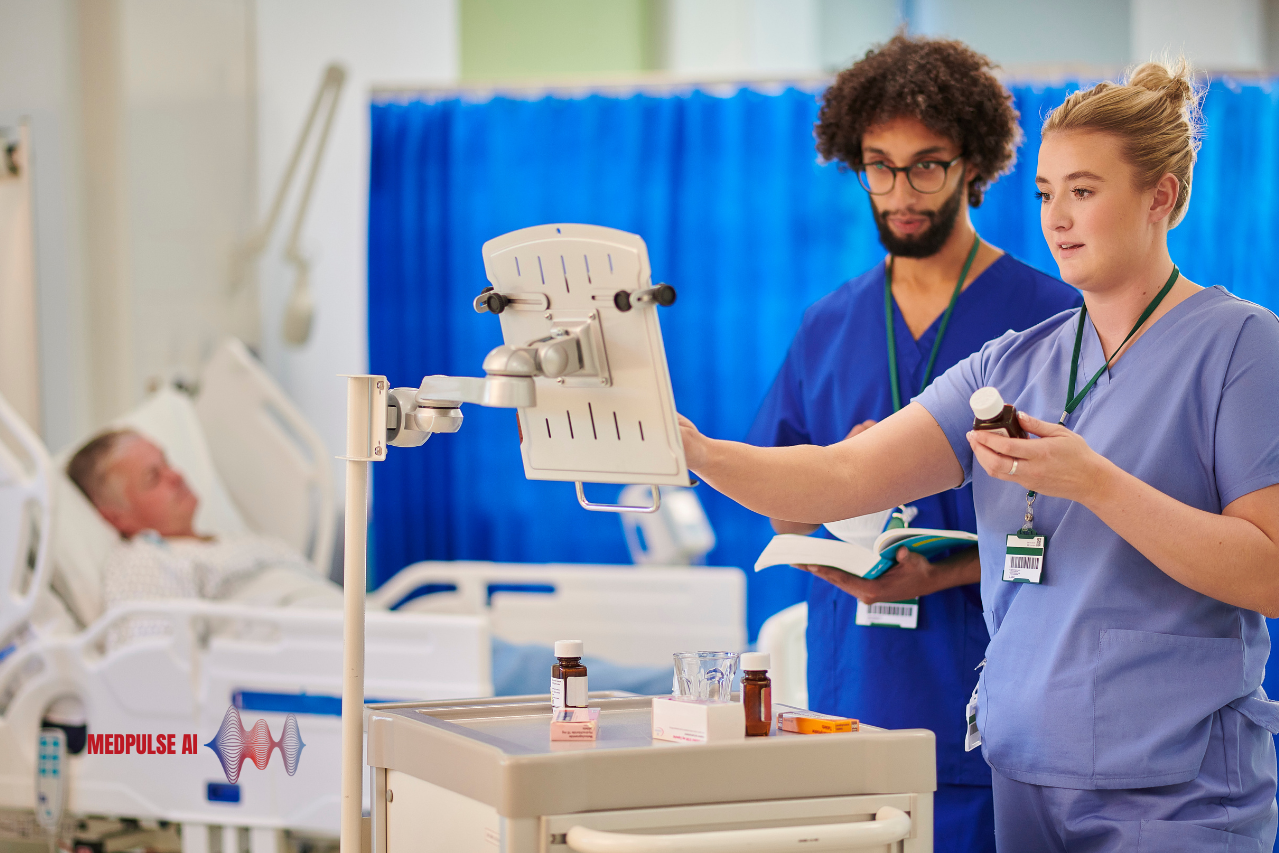In an exciting leap forward for patient safety, researchers at the University of Washington School of Medicine have created a wearable AI-powered camera that spots medication errors in real-time. This cutting-edge device showed exceptional accuracy in trials, with a 99.6% success rate in catching vial-swap mistakes. Tailored for high-intensity environments like operating rooms and ICUs, this AI camera goes beyond just being a tech innovation—it offers a practical solution to the risks of medication errors in healthcare. It’s a promising development that could help healthcare professionals focus more on patient care, knowing that this “extra set of eyes” is there to help catch potential errors before they happen.
Medication errors are a persistent issue in healthcare, contributing significantly to patient harm worldwide. According to research, medication errors account for one of every twenty critical incidents in clinical settings. The WHO reports that these errors are a leading cause of preventable harm, with about 1.2 million adverse events each year in the U.S. alone, costing approximately $5.1 billion. These errors are often linked to syringe and vial-swap issues, especially during intravenous drug administration. Standard barcode systems are available to reduce such errors, but due to their additional workflow step, they are often bypassed in high-stress scenarios like emergency care.
Behind the Scenes of the AI Camera Development
To address the limitations of traditional safety checks, the AI-driven camera system continuously monitors medication preparation and alerts healthcare providers to potential errors before they occur. The technology relies on computer vision, deep learning algorithms, and a GoPro-style wearable camera that observes the medication-handling process and identifies specific medications by recognizing visual cues such as vial cap color, label print size, and syringe shape. Unlike barcode systems, this AI-powered camera system detects errors without requiring additional manual steps from busy healthcare workers, thereby fitting seamlessly into high-stress environments.
The training process for this deep-learning model involved collecting high-definition 4K footage of 418 drug draws by anesthesiology professionals in various operating room setups. This vast dataset was then meticulously annotated to help the model recognize medications accurately under different lighting and handling conditions.
The technology is so advanced that it can “see” beyond partial obstructions, focusing on objects in the foreground, like the syringe in use, while ignoring irrelevant items in the background. According to Shyam Gollakota, a professor at UW’s Paul G. Allen School of Computer Science & Engineering, one of the challenges was training the AI to handle situations where portions of the labels or vials might be obscured by the clinician’s hands during rapid movement.
Key Features and Technology Behind the Wearable AI Camera
- Real-Time Image Recognition and Computer Vision
The wearable camera system harnesses advanced computer vision technology to identify medications based on their visual characteristics rather than relying on text. This method enables the AI to quickly cross-reference medications with a patient’s electronic health record (EHR), alerting clinicians to discrepancies instantly. This is particularly valuable in environments where even a split-second delay can impact patient outcomes. - Machine Learning for Enhanced Adaptability
The system’s machine-learning algorithms continuously learn from each new interaction, becoming better at distinguishing between different vial sizes, shapes, and cap colors. This adaptability makes it especially useful in diverse medical settings where medication packaging may vary. - Intuitive Integration into Clinical Workflows
Unlike barcode systems that require additional scanning, the wearable camera provides passive monitoring, reducing interruptions in clinical workflows. The technology’s seamless integration into healthcare settings ensures it can be a reliable support tool without adding to the burden of overworked healthcare providers. - Patient and Staff Safety
The AI-powered camera is designed to act as an “extra set of eyes,” reducing the mental load on clinicians and increasing confidence in medication accuracy. This not only improves patient safety but can also help reduce staff burnout by lessening the constant need for double-checking.
Clinical Impact and Benefits
The AI-powered wearable system presents numerous advantages in improving healthcare outcomes and reducing healthcare costs associated with adverse events from medication errors:
- Enhanced Patient Safety
With real-time error detection, the wearable AI camera provides a critical layer of safety for patients, preventing potentially life-threatening drug administration errors. In high-stakes settings, this system’s immediate feedback can make the difference between successful treatment and medical complications. - Economic Efficiency
By preventing errors that lead to extended hospital stays or further treatment, the wearable AI camera has the potential to reduce costs significantly. This is especially beneficial as hospitals worldwide face budget constraints and work to improve efficiency in patient care. - Support for Healthcare Workers
The wearable system empowers healthcare providers by acting as a reliable support tool, allowing them to focus more on patient care and less on manual verifications. This can be especially useful in intense settings like the ICU, where clinicians handle dozens of medication draws per shift.
Dr. Kelly Michaelsen, co-lead author and assistant professor of anesthesiology, spoke about the potential impact of this technology: “The thought of being able to help patients in real time or to prevent a medication error before it happens is very powerful.” She explained that although a goal of 100% error-free performance would be ideal, even humans cannot reach that level of perfection. Yet in tests, the AI-powered system achieved more than 95% accuracy—exceeding the threshold desired by over 100 anesthesia providers surveyed, who emphasized that this level of precision would make the system a valuable asset in high-stakes settings such as operating rooms and ICUs.
Challenges and Future Potential
Despite its numerous advantages, the wearable AI camera system does come with challenges. Data privacy and security concerns are paramount, as the continuous recording of medication administration involves capturing patient-related information. Ensuring that the system complies with privacy regulations, such as HIPAA, is essential. Additionally, there is the question of cost and accessibility, particularly for smaller hospitals or clinics with limited budgets.
Moving forward, the research team at UW Medicine hopes to refine the AI model further, enhancing its accuracy in increasingly complex medical scenarios. The future potential of wearable AI cameras in healthcare goes beyond medication verification, with applications in monitoring other procedures, fall detection, and patient adherence to treatment protocols. As AI continues to evolve, the possibilities for AI-enabled wearables in healthcare will likely expand, driving transformative changes in patient safety and clinical efficiency.
The Path Ahead
As AI-driven healthcare technologies continue to develop, wearable systems like the one from UW Medicine exemplify the potential of AI to act as a safety net in critical care. According to studies, up to 12% of medication errors lead to severe patient harm or death, underscoring the need for effective safeguards. By taking on the role of an extra set of eyes, wearable AI cameras could help alleviate the burden on healthcare providers, improving patient outcomes in the process. While challenges remain, the promise of AI-powered wearable technology marks a new era of innovation in healthcare.
This wearable AI camera system exemplifies how AI, when thoughtfully integrated into healthcare, can enhance safety and support healthcare professionals in delivering high-quality patient care.
Are you interested in how AI is changing healthcare? Subscribe to our newsletter, “PulsePoint,” for updates, insights, and trends on AI innovations in healthcare.




